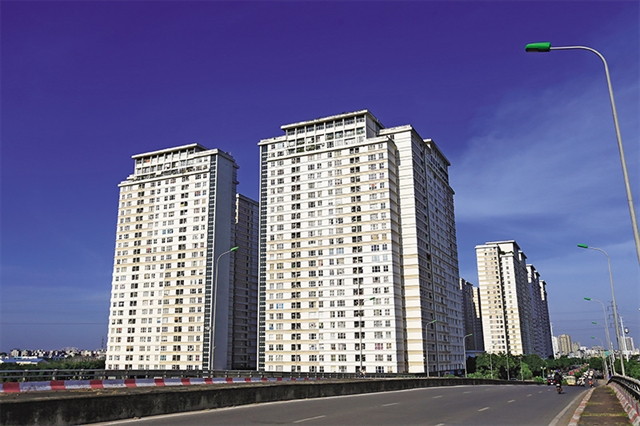State Bank of Vietnam (SBV)’s Governor Nguyen Thi Hong said real estate loans by the end of September this year were VNĐ3.15 quadrillion, up 9.15 per cent compared to the end of last year.

Real estate loans by the end of September this year were VNĐ3.15 quadrillion, up 9.15 per cent compared to the end of last year. Photo cafef.vn
There is a concern about risks that can arise as real estate credit has increased sharply in recent years, particularly by the end of September, when the real estate credit growth was higher than the general credit growth of the entire economy.
In a recent meeting of the National Assembly, State Bank of Vietnam (SBV)’s Governor Nguyễn Thị Hồng said real estate loans by the end of September this year were VNĐ3.15 quadrillion, up 9.15 per cent compared to the end of last year. The rise was also 0.15 per cent higher than the general credit growth rate of the entire economy.
Notably, real estate business credit by the end of September 2024 increased by 16 per cent, while consumer real estate credit increased by only 4.6 per cent. This caused the proportion of real estate business credit to surge to 40 per cent, while the proportion of real estate consumer credit to decline to 60 per cent.
Nguyễn Quang Huy, a financial expert from Nguyễn Trãi University, said the SBV has introduced many management policies to control credit flows into real estate, but real estate credit growth remained higher than the general credit growth of the entire economy. Therefore, risk control will face many challenges.
Excessive growth in real estate credit will put pressure on the monetary and financial policies.
According to Huy, most of the products offered in the real estate market are in the high-end segment. Real estate prices have increased significantly since the beginning of this year, largely due to scarce supply and strong support from credit flows. Real estate prices have increased too quickly, which can cause a bubble, especially when real demand cannot keep up the rising price.
When most of the credit is focused on the high-end real estate segment, potential bad debts can easily arise if the economic growth shows signs of slowdown or the real estate market encounters difficulties, Huy said.
According to the financial expert, high-end real estate projects all require large amounts of capital so real estate developers often need high debt ratios.
If demand in the high-end real estate segment declines, the developers may have difficulties in paying off loans that creates great pressure on banks. Real estate is also the main collateral of enterprises and individuals for bank loans. When real estate prices increase too much and do not truly reflect the true value of the property, the value of the collateral may not be enough to compensate if there is a risk of bad debt.
According to experts, a strong focus of capital flows on real estate will reduce investment capital for other production and business sectors that hinders the overall development of the economy.
To control credit risks and ensure the safety of the banking system, experts emphasised the need for strong management measures from the SBV to limit the amount of credit to the high-end real estate segment and encourage credit to mid-range and affordable segments to meet real demand and increase liquidity. — VNS
Read original article here